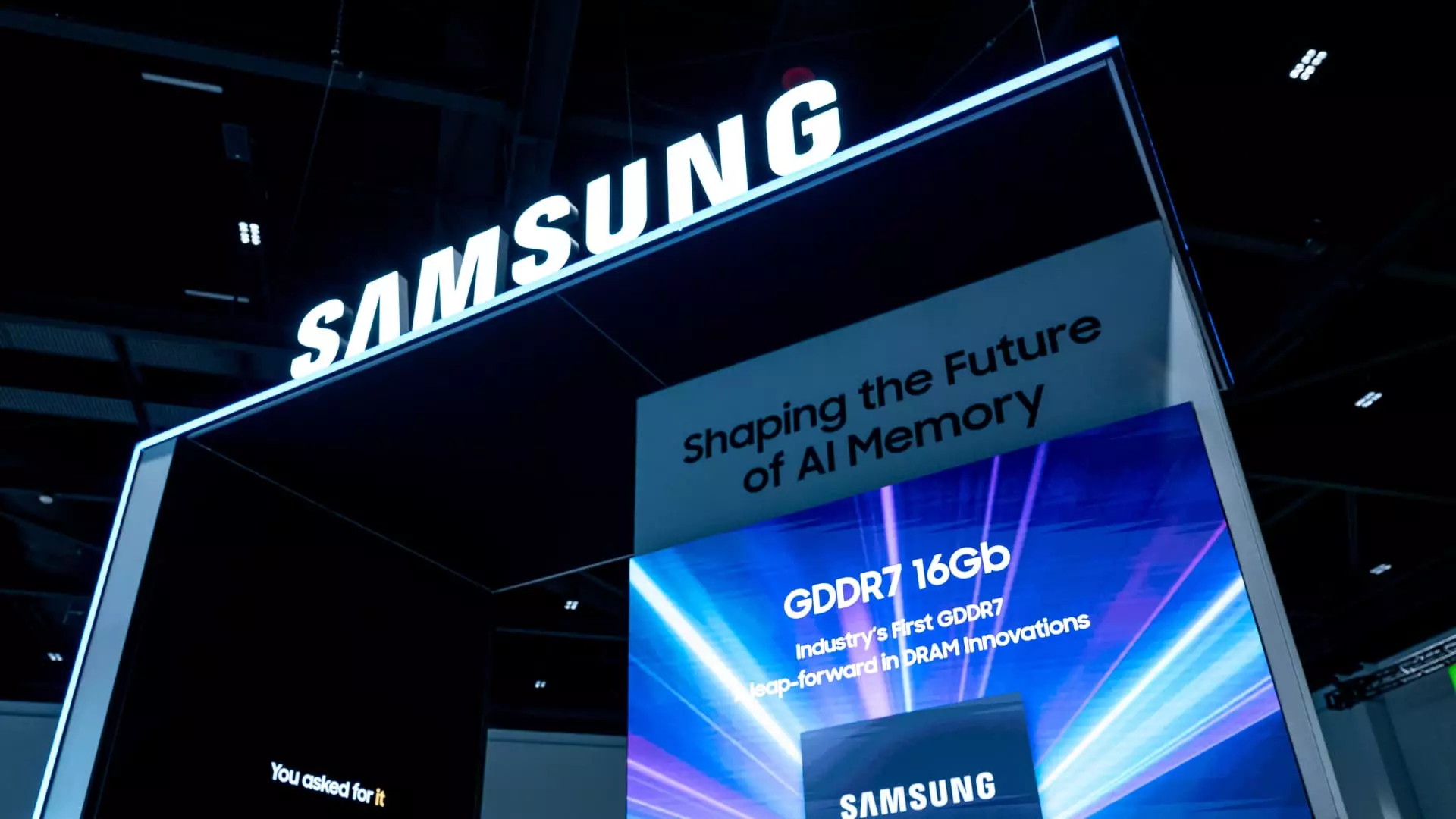Samsung Electronics, once regarded as an unassailable titan in the technology industry, now finds itself navigating turbulent waters marked by declining profits and mounting strategic challenges. The company’s recent forecast of a staggering 56% drop in operating profit for the second quarter underscores the harsh realities even industry leaders cannot escape. Far from being a mere short-term setback, this decline shine a spotlight on underlying vulnerabilities that threaten to reshape the competitive landscape of global semiconductors and consumer electronics.
The projected operating profit of approximately 4.6 trillion won—down sharply from the previous year—falls short of analyst expectations, illustrating how external pressures and internal missteps converge to erode financial stability. Even when considering optimistic estimates like those from LSEG’s SmartEstimate, Samsung still faces stark disappointment. The widening gap between expectations and reality highlights an industry that is increasingly unforgiving of complacency or inertia.
Many policymakers and industry insiders tend to overlook how integral Samsung’s core industries are to the broader technology ecosystem. As the dominant force in memory chips and smartphones, any sign of faltering in these domains sends ripples far beyond Korea’s borders, threatening the global supply chain and innovation pipeline. Their revenue projections, just shy of analyst estimates, paint a picture of a company whose growth engine is sputtering amidst intensifying competition and geopolitical constraints.
Strategic Mistakes and Market Realities
The reasons behind Samsung’s economic slump are multifaceted but interrelated. The company explicitly attributes part of its trouble to inventory adjustments and the fallout from U.S. export restrictions targeting advanced AI chips destined for China. These restrictions, ostensibly intended to curb Chinese technological advancement, inadvertently hamper Samsung’s capacity to capitalize on burgeoning AI markets. This strategic obstacle complicates the company’s effort to maintain leadership in a rapidly transforming semiconductor sector.
Furthermore, Samsung’s ongoing struggle in the high-bandwidth memory (HBM) segment signifies a core weakness that could have long-term repercussions. Competitive rivals like SK Hynix and Micron are gaining ground, especially in the lucrative AI and data center markets. SK Hynix, in particular, has established itself as Nvidia’s primary HBM supplier—a critical role that assures steady revenue streams and technological influence. Meanwhile, Samsung battles to get its latest HBM products certified and integrated into Nvidia’s supply chain, with recent delays pushing these advances into the second half of the year.
Crucially, these technical setbacks are not insular issues. They reveal a broader misalignment between Samsung’s innovation pace and the needs of a market that rewards speed, specificity, and strategic partnerships. While Samsung attempts to play catch-up, competitors are poised to exploit their delays, further diminishing Samsung’s share of the high-margin AI chip market.
The Internal Struggles and Future Outlook
Samsung’s internal struggles are compounded by broader industry headwinds. The company reportedly responded to declining demand by instructing subsidiaries to cut significant staff—up to 30% in some divisions—as part of an effort to tighten costs and improve operational efficiency. Such austerity measures, while prudent in the short term, risk stifling innovation and agility, qualities essential for competing at the cutting edge of technology.
Additionally, the company’s foundry segment continues to face stiff competition from Taiwan Semiconductor Manufacturing Company (TSMC), which enjoys an overwhelming market share in advanced chip fabrication. Samsung’s inability to secure a dominant foothold in this arena underscores a fundamental strategic dilemma: whether to double down on in-house innovation or leverage partnerships more effectively.
Despite these challenges, Samsung’s stock has seen a noteworthy rally of over 16% year-to-date, reflecting investor confidence in its long-term potential. This optimism may stem from expectations that the company’s diverse product portfolio, global scale, and ongoing R&D investments will eventually offset current setbacks. However, unless Samsung recalibrates its strategic focus—particularly in AI chips and high-margin segments—it risks falling further behind in the innovation race.
Samsung’s current predicament offers a sobering lesson about the unpredictable nature of the tech industry, where even the most dominant players are vulnerable to rapid change, geopolitical disruptions, and strategic miscalculations. To regain momentum, Samsung must embrace innovation with agility and foster closer alliances with key industry players, rather than relying solely on in-house development.
In a world increasingly driven by AI, 5G, and cloud computing, Samsung’s ability to pivot swiftly, navigate regulatory hurdles, and outpace competitors will determine its future standing. The challenge is formidable, but history suggests that the most resilient companies—those willing to adapt and innovate relentlessly—can turn setbacks into surges of renewed strength. The question remains whether Samsung possesses the resilience, strategic vision, and agility necessary to rise from these setbacks as a true leader in tomorrow’s technology landscape.

